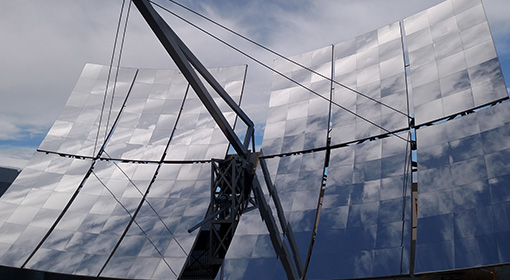SST has completed the basic R&D and proof of concept test of Dish with CPV and heat removal. It is now making and testing demonstration units, and preparing for next-gen design and manufacturing improvements.

The technology incorporated in the SST CPV module and dish system includes:
- High-density CPV module design. Uses state-of-the-art materials and processes as used in high-power modules for electric vehicles and power converters
- Ability to operate with non-uniform concentrated light. This allows CPV to be used with conventional mirror collectors. Other CPV designs are unable to do so.
- Durable glass optic, using borosilicate glass or quartz, both known for durability in harsh conditions
- Proprietary liquid cooling “coldplate” design, using leak-proof friction stir welding.
- Mirror panel design. Materials-weight efficient, and versatile enough to be made in low quantity without high capital investment. Pathway to low cost high volume production
- Advanced electronics control and data management system. Linux-based for high capability and reliability.
- Includes internet operation. Sunsensor correction of tracking errors.
- Integrated DC-DC power conversion. Includes remote control and real-time data collection. Integrated “maximum power tracking” which dynamically adjusts for changes in ambient conditions including temperature and sunlight
- Potential for integrated low cost DC-AC conversion
- Optical design methods developed at SST to facilitate the custom design of CPV-mirror arrays for different dish and tower applications
- Patent applied for in the US. Substantial opportunity for new patent applications in regions around the world
- High product content that can be manufactured in a local market. Steel structures, motor/drive actuators and mirror panels together are the majority of the product cost.
- Market entry cost target of under $3000/kW, with potential to cost well under $2000/kW at mature production of under 100 MW per year.

